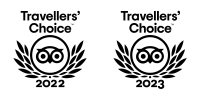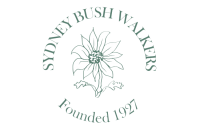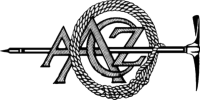- Home
- Nepal
- Adventure Activities
- Peak Climbing
- Mountain Expedition
- Local Tours
- Sirubari Village Homestay
- Ghale Gaun
- Kalinchowk Tour
- Halesi Mahadev - Maratika Cave package
- Chitwan Jungle Safari
- Day tour in Kirtipur
- Day tour in Kathmandu City
- Spiritual Tour to Muktinath
- Chitlang and Kulekhani
- Bardiya National Park
- Jeep Tour to Rara Lake
- Gosaikunda Lake
- Manakamana day Tour with cable-car ride
- 4WD Jeep Tour to Upper Mustang
- Family Holidays
- Heli & Mountain Flights
- Trekking Routes
- Kailash Mansarovar
- Bhutan
- Tibet
- Multi Country
- Domestic Flights
- Contact
- Home
- Nepal
- Adventure Activities
- Peak Climbing
- Mountain Expedition
- Local Tours
- Sirubari Village Homestay
- Ghale Gaun
- Kalinchowk Tour
- Halesi Mahadev - Maratika Cave package
- Chitwan Jungle Safari
- Day tour in Kirtipur
- Day tour in Kathmandu City
- Spiritual Tour to Muktinath
- Chitlang and Kulekhani
- Bardiya National Park
- Jeep Tour to Rara Lake
- Gosaikunda Lake
- Manakamana day Tour with cable-car ride
- 4WD Jeep Tour to Upper Mustang
- Family Holidays
- Heli & Mountain Flights
- Trekking Routes
- Kailash Mansarovar
- Bhutan
- Tibet
- Multi Country
- Domestic Flights
- Contact
Api Base Camp Trek
An exciting Trekking experience
Api base camp is a gem hidden in far-western region of Nepal. The real adventure, amazing landscapes, cultural diversity, furiously galloping snow fed rivers, stunning mountains and pristine forest are most eye catching factors of this trek.
Api base camp trekking of 15 days begins with scenic flight from Kathmandu to Dhangadhi and forward scenic drive to Latinath passing Gokuleshwar behind. Ahead, developing steady walk by passing numerous of traditional villages holding stone houses, alpine forest, open grassland, pastures by enjoying magnificent surrounding views with stunning mountains leads towards open plateau surrounded by mountains (Api base camp). Surely, after steeping on high elevation rewarded views makes you feel the sense of real achievement. Countless additional attractions ahead and opportunity to inspect the way of surviving by western Nepalese peoples are encountered en route. Multiple experiences of camp stay, home stay and normal lodge stay make this trekking trip more unique and rewarding.
2+
Detailed Itinerary
- Day 1: Arrival day in Kathmandu
Today, we will come airport to pickup you and drop to your hotel - Day 2: Kathmandu (1,300 m) to Dhangadhi (109 m) 15 min flight
After breakfast,we will have a short scheduled flight to Dhangadi. Finally after land off on Dhangadi airport, we will be straight transferred towards tourist standard hotel for freshen up along remaining hours will be set up for exploring throughout attractions including Aircraft museum, cycling up to Botanical Garden and many more others. - Day 3: Dhangadhi (109 m) to Gokuleshwar (640 m) 8 hrs drive
Third day early morning leaving plains of Terai, we move ahead by following Mahakali highway towards hilly region to Gokuleshwar. Steady drive on uphill till Dadeldhura and continuing drive forward through high winding roads by inspecting beautiful views of Himalayas through windows of bus takes to Gokuleshwar. According to your desire, remaining hours can be spent by exploring nearby attractions or you can take a rest. This night will be spent at a lodge in Gokuleshwar. - Day 4: Gokuleshwar (640 m) to Latinath (1,004 m) 2 hrs drive and then Paribagar (1,770 m) 1 hrs trek
We follow the drive way along Chameliya River and pass biggest hydropower station in the far west Nepal to reach Latinath. Therefore, short ultimate uphill walk begins forward takes towards a beautiful village of Paribagar. - Day 5: Paribagar (1,770 m) to Makarigadi (1,470 m) 5 hrs trek
Fifth day, marching ahead by enjoying breakfast and leaving Paribagar behind along passing numerous of traditional villages holding stone houses and terraced fields on way leads towards tea house. Enjoying short moment in tea house and continuing walk forward by crossing pleasing forests holding verities of flora and fauna takes to beautiful settlement of Makrigaad. Tonight’s dinner and accommodation is arranged in a homestay. - Day 6: Makarigadi (1,470 m) to Siti (2,250 m) 8 hrs trek
Sixth day after enjoying breakfast, our day’s walk begins with a short steep climb towards the Chameliya River along after that continuing walk by climbing up the gorge with spectacular views by side, leads to Pato. Further walk from pato, gentle and steady climb takes to Siti by passing numerous of settlements along traditional attractions en route. This night we stay at local house of host family along enjoying unique dinner with them. - Day 7: Siti (2,250 m) to Domal (2,950 m) 7 hrs trek
Seventh day, initially following the downhill walk to the beautiful village located at the bank of river along forward steeping slow ascend takes to Dolma (sacred spot and junction point of two opposed rivers). This night will come to be different from other nights because tonight we plan to stay by setting up the camp far away from settlements. - Day 8: Domal (2,950 m) to Dhaulo Odar (3,545 m) 5 hrs trek
Eight day, we step forward after having morning breakfast at Domal by catching a steep climbing trail which leads at little top height. Initially, passing easy walk through forests and open pasture spots slides towards Dhaulo Odar (an open grassland surrounded by high towering mountains, pleasing forests and few compact caves) to set up a camp for spending our night there. - Day 9: Dhaulo Odar (3,545 m) to Api base camp (3,860 m) 3 hrs trek and back to Dhaulo Odar (3,545 m) 3 hrs trek
Ninth day targeting base camp of Mt. Api, we march forward following upward trail towards a massive open plateau surrounded by mountains. As, we reach plateau (base camp of Mt. Api) that greets breathtaking views of Mt. Api accomplished by Mt. Nampa(6,929 m) and Mt. Bobaye (6,808 m). After enjoying some moment there, we head towards the source of Chameliya River (Pikandaha) by passing compact temples. Finally after reaching Holy Lake, we spent few time and return to Dhaulo Odar for spending overnight. - Day 10: Trek from Dhaulo Odar (3,545 m) to Siti (2,255 m) 6 hrs trek
Tenth day splitting base camp of Mt. Api, we move backward till Siti. Morning downhill walk directly leads to unique settlement of Khayekot and forward passing agricultural terrace fields, alpine forest and eye catching green hills along following a steep climb ahead takes to beautiful village of Siti. Finally after stepping Siti, night will be spent in a home stay enjoying dinner prepared by members of host family. - Day 11: Siti (2,255 m) to Makrigaad (1,470 m) 6 hrs trek
Eleventh day, we develop walk catching an upward rigid above Siti passing forest, agricultural field and spare settlement along enjoying breathtaking views of white Himalayas before stepping Pato. Forward, steady downhill walk takes to settlement of Makarigaad and remaining hours will be spent by exploring the settlement throughout along night will be spent at house of local people by enjoying dinner prepared by them. - Day 12: Makrigaad (1,470 m) to Latinath (1,005 m) 4 hrs trek and Gokuleshwar (857 m) 2 hrs drive
Twelfth day, begins with morning downhill less demanding and very pleasant walk by exploring Hindu temple and passing numerous of attractive settlements on mid way before reaching Latinath. Ahead, catching a vehicle leads towards Gokuleshwar. Finally from the bus station, we will be transferred towards a basic lodge at Gokuleshwar for spending night. - Day 13: Gokuleshwar (857 m) to Dhangadi (109 m) 9 hrs drive
Thirteenth day after attending morning breakfast, we move forward to catch our tourist standard bus to bus station. Passing through roadside tea house, hamlets, beautiful green hills holding terraced fields and many more other attractions reaches Dhangadi. Finally, we will be shifted to fine hotel there for taking a relief shower and painless rest along tonight’s dinner and accommodation will be also managed at hotel. - Day 14: Dhangadi (109 m) to Kathmandu (1,300 m) 1 hr and 15 min flight
Fourteenth day, we move forward to airport to board a flight focusing our ticket time. Finally, landing off on Tribhuwan International Airport (Kathmandu) after scenic flight our private vehicle picks up and escorts towards fine tourist standard hotel. Remaining hours can be spent by exploring nearby attractions or by taking a rest in hotel and this night will be spent at hotel in Kathmandu. - Day 15: Departure day
Today, we will drop you to the airport and wish for your safe flight.
This trip can be redesigned or redeveloped as per your taste, For more information please e-mail us at This email address is being protected from spambots. You need JavaScript enabled to view it.
Cost and dates
We do small group trek or private trip as your request.
For quick information / contact us at whatsapp/viber + 977 9841815039
Or Drop us inquiry at This email address is being protected from spambots. You need JavaScript enabled to view it.
Frequently Asked Questions
It is always a good idea to involve yourself in doing physical exercises before trekking. Not that you have to be all athletic and muscular to trek. An average level of physical fitness will make the journey less stressful.
Availability of drinking water is not the problem. The problem is the cost of it at higher altitude. As you gain height, the price of water rises up to 2-3$ per liter.An alternative way of getting drinking water is by having your water bottles filled in tea houses. Tea houses will provide you boiled water for about 1$ per liter. They are completely safe for drinking.
Food is not of any concern while trekking. You will get all kinds of cuisines. For breakfast, tea houses will provide you with eggs cooked in your preferred style along with pan cakes, bread butter, roti, and so on.Various other dishes like pizza, pasta, momo, chowmein and many more are also available. The most preferred dish is Dal Bhaat. It is a typical Nepali meal. Rice is served with vegetable curry, lentils, tomato chutney and meat curry.
Trekking is an extreme sport and does come with a lot of risks. Some unavoidable risks are avalanche, heavy rainfall, earthquake, landslide and other such natural calamities.You might fall and injure yourself or catch some viral flue. The deadliest risk of trekking is AMS or Acute Mountain Sickness. This sickness occurs when a great altitude is gained and the body fails to adjust to the changing pressures associated with it. Anyone can fall a victim of the sickness and if not treated in time, it can be fatal.
There is no such hard and fast rule that you must have one. But it is highly advisable to travel with them. Some of the treks cannot be trekked without a guide most of them are the restricted ones.
Visit us
-
JP Marga, Thamel, Kathmandu, Nepal
-
+977-01-5365371
-
+977 98418-15039
(Whats App, Viber & Telegram)








